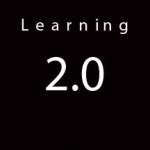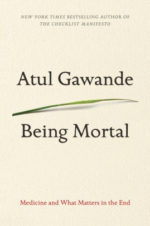Re-Bundling Teaching, Testing, and Growing Up
Posted on | September 7, 2011 | Comments Off on Re-Bundling Teaching, Testing, and Growing Up
We need to rebundle.
For the past century, teaching, testing, and growing up have been tied into a bundle called school. My schooling—like that of every other student—was a mixture of maturation and mental exercise, of intense bonding among peers under the watchful eyes of adults, who understood more than we thought they did.
An illustration in the form of a short personal story:
When I was in high school, I had a history teacher named Annette Sheel. I am sure Miss Sheel, which was the proper form of address in those days, marched through the curriculum: I remember a thick book by Henry Steele Commager. But Miss Sheel changed my life, not because of the official course of study, but by saying, “I would like you to go with me tonight to hear a speech in Chicago.” I appeared disinterested. “Mary is going,” said Miss Sheel. The thought of riding to the city in the back seat of Miss Sheel’s Oldsmobile with a person of great interest sold the deal. We arrived a little late at Orchestra Hall and were ushered to an upper balcony. I quickly realized that we were nearly the only white people in the auditorium, and way down on the stage was a Black man, a preacher from Alabama, who began to speak in a voice and with authority I had never heard before.
He spoke of a bus boycott, and of being in jail in Birmingham, of the struggle to end a system of segregation that ruled the South by law and Chicago neighborhoods by practice and tradition. My worldview changed in the passage of an hour.
There were other teachers, too. Some told me I was stupid because I couldn’t spell. Still can’t. Letters move around in my head a little. I had to get over those teachers and those issues to get on with life. (I had a personal method of test prep for essay questions where dictionaries were not allowed and handwritten responses were required. I’d write three or four essays beforehand on topics that I thought related to questions that might be asked. I’d memorize the key words. I’d write it all out longhand to get into the practice of making it legible. My cursive is terrible, so I needed to train my hand as well as my spelling memory. Then, in the exam room, I’d tweak the essays just enough so that they answered the question the test asked.) Never got good grades until graduate school, when thinking and synthesis counted more than recounting facts and spelling.
Miss Sheel, it should be reported, was amazed at how we all turned out. At a class reunion 35 years later, my friends and I encountered her for the first time since we left high school. She stood ramrod straight, walking stick in one hand, with a straight-up Manhattan in the other. “My God, you all survived,” she said, essentially giving us a lifetime grade of “exceeds expectations.” Then she took a sip.
In Miss Sheel’s classroom, growing up, teaching, and testing were tightly bundled, as they were throughout most of public education. In the high-trust education institution that existed for the first six decades of the past century, a teacher’s grade book and periodic report cards were the definitive and authoritative statements about a student’s achievement. External testing was relatively unimportant, except for the relatively few students headed toward selective colleges and universities for whom scores on the SAT or the ACT were weighty. Teachers also became gatekeepers and sorters of students in formal and informal ways, pointing students toward college or toward the schoolhouse door. Even the teenager in Miss Sheel’s class knew race and social class coded that student sorting.
In the intervening decades, public education has moved from a high-trust and organizationally closed institution to one that is low trust and externally examined. The drawstrings around the tight bundle of teaching, growing up, and assessment loosened in several ways:
- External examination has become much more determinant of a student’s path toward college and career. Student performance on examinations has become a gateway for them.
- The Bell Curve expectations have flattened, replaced by universal high standards backed up by state and federal accountability measures.
- The sources of direct instruction and interactions that teach have multiplied.
- Teacher attention to the “growing up” part of schooling is subordinated to attention to the official curriculum.
The old bundle has clearly come apart and a new, dysfunctional bundle of teaching and testing created. One does not have to be a signatory to the Save Our Schools movement to observe that external testing is driving instruction in counterproductive ways. Accountability pressures have narrowed the curriculum, particularly in high-poverty schools where test scores are the lowest and schools most likely to be labeled as failing. The attachment of sanctions to test results has created strong incentives to game the system and cheat on the tests themselves. The ability of school districts to link their official curriculum to tests over specific units of instruction have increased external monitoring of classroom results but often without good programs of formative assistance.
Rewriting the federal Elementary and Secondary Education Act (and ridding ourselves of the No Child Left Behind brand name) won’t solve the problem, and neither will romantic notions about leaving teachers alone to do their best. The high-trust, logic-of-confidence institution of education has been dismantled, and no amount of wishing it were otherwise will replace it. Instead, we need to structurally change the relationship between teaching, testing, and our expectations for nurturing and guiding students.
First, we need to separate teaching and testing. External tests—those not constructed by a student’s teacher—are not going away. They have become social and economic gatekeepers, determining what colleges students get into, what civil service jobs they qualify for, whether law school is in their future. There is good reason to protest needless testing and to protest tests that don’t measure what they purport to, but students will face gateway tests.
But we need to be clear that we want our teachers to do something more than prepare students to take external tests. The tendency over the last decade in particular is to make teaching more like testing, or at least a long form of test prep. Assignments are tailored to the types of questions that will be asked on external tests. Reading whole books and long passages is sacrificed to quick decoding of paragraphs, because that is the form literature takes on the tests. At the worst, this leads to phony learning and teachers telling me in confidence, “My students can score Proficient on the CST, but they still can’t write.”
Rather than making teaching more like testing, it is better to establish them as two different domains. Students ought to be able to demonstrate mastery, synthesis, and application of knowledge for their teachers. And schools and districts should adopt teacher evaluation systems that insure that teacher-made tests are rigorous. While student progress on external tests provides data about the quality of teaching, they should never be relied on as the single indicator.
If we accept testing as a separate domain from teaching, it is possible to be candid with students about the nature of these hurdles society has constructed for them. Tell them—and tell their parents—what tests they will be facing, what consequences are involved, and how they can best prepare for them. For gateway tests, provide extra test prep for students who want and need it. But don’t confuse it with teaching. No one confuses the taking the bar exam or preparing for it with going to law school. No one should confuse SAT results with doing well in school.
If we accept testing as a separate domain from teaching, it will incentivize educators to have fewer, better, and more substantive tests, and it will allow teachers to become strategists with their students: helpers, coaches and advocates. When criticism of tests is warranted and needed, as it often is, it will place teachers in the position of advocates for more authentic tests rather than the current situation in which they are cast in the role of denying that achievement counts, as public policy critics now characterize them as doing.
Second, we need to separate teaching and time. Nothing characterizes education more than the time-subject dimension, largely with negative consequences. The idea that all students take the same time to master Algebra I creates unnecessary failure and discouragement. The basic design motif of holding learning time constant and letting achievement vary may have been the best we could do in a early 20th Century batch processed system, but society now expects public education to educate virtually all students to a high standard.
Because we officially believe in universal high standards, it is imperative that we allow time-to-learn to vary. Some students take longer to master topics, some much less. If we were to allow students to take course exams, offered statewide and accessible on line, when they were ready, it would convert the notion of a course from a time-bounded exercise to a somewhat open-ended one in which students who could finish faster could.
For students who needed more time, rather than the current morass of credit recovery, we could create much more clinical, targeted experiences. One of the insights from Sal Kahn’s on-line work is that students who were struggling last week may not be the same ones who are stuck this week. Once they learn a concept, they can zoom ahead. But our current system labels them as struggling, and typically lowers the expectations so that they don’t catch up. They are labeled as failures. A system with much more formative assessment, from the problems and practices students were actually engaged in, would help the system become seamless.
Third, we should rebundle teaching and growing up. One of the highly negative consequences of the pressure for test score achievement has been the disregard for what the British call the pastoral dimension of teaching. Learning is deeply relational. Great teachers have always realized this, and if we were able to rationalize the examination system, giving sensible tests where life junctures demanded them, and if we could design teaching to remove some of the testing routines, then we could consciously think of the coaching, modeling, life affirming aspects of teaching.
That’s what Miss Sheel did, and I was the beneficary.
Tags: Growing Up > Maturation > Teaching > Testing





